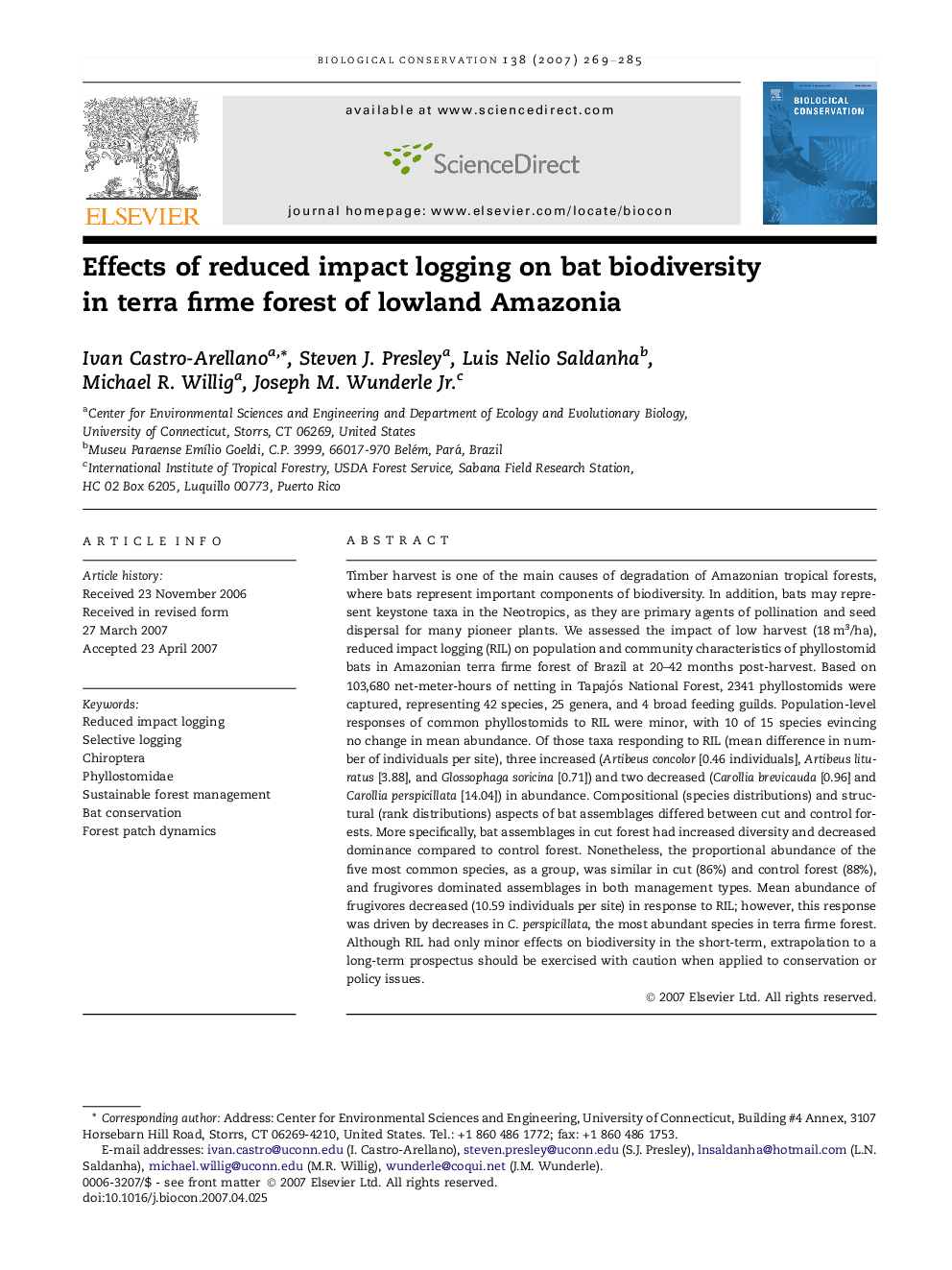| کد مقاله | کد نشریه | سال انتشار | مقاله انگلیسی | نسخه تمام متن |
|---|---|---|---|---|
| 4387267 | 1617956 | 2007 | 17 صفحه PDF | دانلود رایگان |

Timber harvest is one of the main causes of degradation of Amazonian tropical forests, where bats represent important components of biodiversity. In addition, bats may represent keystone taxa in the Neotropics, as they are primary agents of pollination and seed dispersal for many pioneer plants. We assessed the impact of low harvest (18 m3/ha), reduced impact logging (RIL) on population and community characteristics of phyllostomid bats in Amazonian terra firme forest of Brazil at 20–42 months post-harvest. Based on 103,680 net-meter-hours of netting in Tapajós National Forest, 2341 phyllostomids were captured, representing 42 species, 25 genera, and 4 broad feeding guilds. Population-level responses of common phyllostomids to RIL were minor, with 10 of 15 species evincing no change in mean abundance. Of those taxa responding to RIL (mean difference in number of individuals per site), three increased (Artibeus concolor [0.46 individuals], Artibeus lituratus [3.88], and Glossophaga soricina [0.71]) and two decreased (Carollia brevicauda [0.96] and Carollia perspicillata [14.04]) in abundance. Compositional (species distributions) and structural (rank distributions) aspects of bat assemblages differed between cut and control forests. More specifically, bat assemblages in cut forest had increased diversity and decreased dominance compared to control forest. Nonetheless, the proportional abundance of the five most common species, as a group, was similar in cut (86%) and control forest (88%), and frugivores dominated assemblages in both management types. Mean abundance of frugivores decreased (10.59 individuals per site) in response to RIL; however, this response was driven by decreases in C. perspicillata, the most abundant species in terra firme forest. Although RIL had only minor effects on biodiversity in the short-term, extrapolation to a long-term prospectus should be exercised with caution when applied to conservation or policy issues.
Journal: Biological Conservation - Volume 138, Issues 1–2, August 2007, Pages 269–285